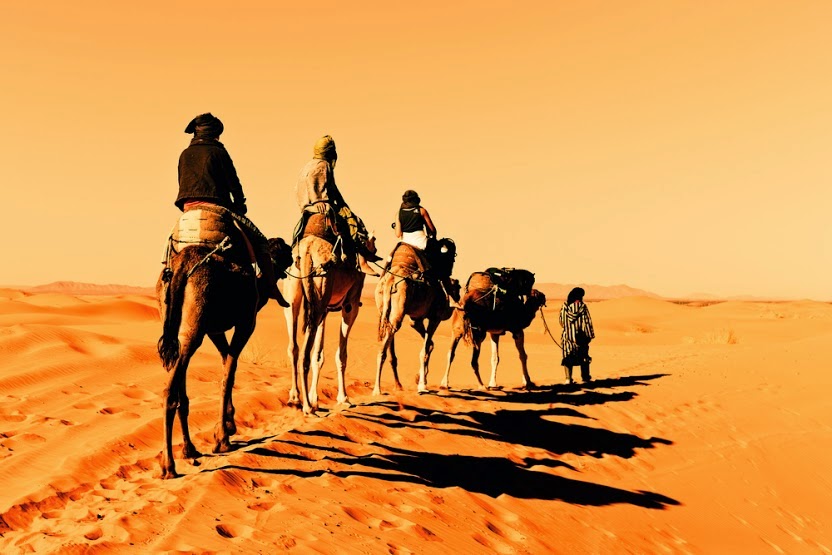Amazing Camel Facts
A camel is an even-toed ungulate
within the genus Camelus, bearing distinctive fatty deposits known as
"humps" on its back. The two surviving species of camel are the
dromedary, or one-humped camel, which is native to the Middle East and
the Horn of Africa; and the Bactrian, or two-humped camel, which
inhabits Central Asia.
Camels were domesticated more than 3,000 years ago, and to this day, humans depend on them for transport across arid environments. They can easily carry an extra 200 pounds (90 kilograms) while walking 20 miles (32 kilometers) a day in the harsh desert. Camels can travel as fast as horses but can also endure legendary periods of time without food or water. Humans have used camels for their wool, milk, meat, leather, and even dung, which can be used for fuel.

When a camel uses the fat stored in its humps for energy, the humps start to get smaller and deflate. The humps grow again when the camel rehydrates.
Camels make the most of a meal. They can rehydrate faster than any other mammal, able to drink about 30 gallons (113 liters) of water in just 13 minutes.
The earliest known camel, called Protylopus, lived in North America 40 to 50 million years ago. It was about the size of a rabbit and lived in the open woodlands of what is now South Dakota. In a southwestern corner of what is now Canada, camels went extinct at the end the last Ice Age, and new research suggests that human predators may have contributed to the Western camel’s (Camelops hesternus) demise.
Camels have very thick lips allowing them to eat even very salty, bitter or thorny plants. If hungry, camels can even eat leather shoes.
Camels were domesticated more than 3,000 years ago, and to this day, humans depend on them for transport across arid environments. They can easily carry an extra 200 pounds (90 kilograms) while walking 20 miles (32 kilometers) a day in the harsh desert. Camels can travel as fast as horses but can also endure legendary periods of time without food or water. Humans have used camels for their wool, milk, meat, leather, and even dung, which can be used for fuel.

When a camel uses the fat stored in its humps for energy, the humps start to get smaller and deflate. The humps grow again when the camel rehydrates.
Camels make the most of a meal. They can rehydrate faster than any other mammal, able to drink about 30 gallons (113 liters) of water in just 13 minutes.
The earliest known camel, called Protylopus, lived in North America 40 to 50 million years ago. It was about the size of a rabbit and lived in the open woodlands of what is now South Dakota. In a southwestern corner of what is now Canada, camels went extinct at the end the last Ice Age, and new research suggests that human predators may have contributed to the Western camel’s (Camelops hesternus) demise.
Camels have very thick lips allowing them to eat even very salty, bitter or thorny plants. If hungry, camels can even eat leather shoes.















No comments:
Post a Comment